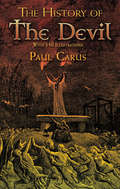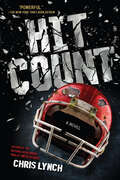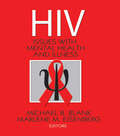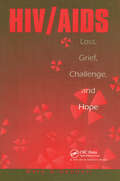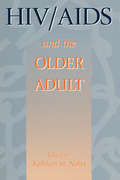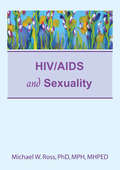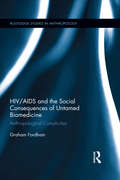- Table View
- List View
The History of the Devil: With 350 Illustrations (Dover Occult Ser.)
by Paul CarusA pioneer in the promotion of interfaith dialogue, Paul Carus (1852–1919) was a highly regarded writer on philosophy and comparative religion and a major influence in introducing Buddhist and other Eastern ideas to the West. The History of the Devil is his magnum opus, exploring the evolution of the idea of evil and the concept of Satan from antiquity to modern times.Carus follows the devil around the world, highlighting satanic manifestations in a fascinating variety of cultures and historic periods. In addition to examining the concepts of good and evil as religious and philosophical ideas, he discusses the particulars of demonology in ancient Egypt and Persia, in Hindu and Buddhist thought, in early Christianity, and throughout the Inquisition and Reformation. At once scholarly and intriguing, the text is enhanced by 350 rare and fascinating illustrations.
The History Of The Mahrattas - Vol I (The History Of The Mahrattas #1)
by James DuffThe power of India reached its pre-British Raj height under the Maratha Empire or the Maratha Confederacy which was an Indian imperial power that existed from 1674 to 1818. At its peak, the empire covered much of India, encompassing a territory of over 2.8 million km². The Marathas are credited for ending the Mughal rule in India.The Marathas were a yeoman warrior group from the western Deccan that rose to prominence during the rule of the Adil Shahi dynasty and Ahmadnagar Sultanate. The empire was founded by Shivaji Bhosle, who formally crowned himself Chhatrapati ("Emperor") with Raigad as his capital in 1674, and successfully fought against the Mughal Empire. The Maratha Empire waged war for 27 years with the Mughals from 1681 to 1707, which became the longest war in the history of India. Shivaji, pioneered "Shiva sutra" or Ganimi Kava (guerrilla tactics), which leveraged strategic factors like demographics, speed, surprise and focused attack to defeat his bigger and more powerful enemies. After the death of the Mughal Emperor Aurangzeb, the empire expanded greatly under the rule of the Peshwas. The empire at its peak stretched from Tamil Nadu in the south, to Peshawar (modern-day Pakistan) on the Afghanistan border in the north, and Bengal and Andaman Islands in east. In 1761, the Maratha army lost the Third Battle of Panipat to Abdali’s Afghan Durrani Empire, which halted their imperial expansion. Ten years after Panipat, young Madhavrao Peshwa reinstated the Maratha authority over North India. In a bid to effectively manage the large empire, he gave semi-autonomy to the strongest of the knights, which created a confederacy of Maratha states. In 1775, the British East India Company intervened in a succession struggle in Pune, which became the First Anglo-Maratha War. Marathas remained the preeminent power in India until their defeat in the Second and Third Anglo-Maratha wars (1805–1818), which left the British East India Company in control of most of India.
The History Of Witchcraft: Paganism, Spells, Wicca and more
by Lois MartinWitchcraft has recently been undergoing a huge popular revival, but does modern pagan witchcraft really bear any resemblance to its historical antecedents? The witch in history was a very different creature from her modern counterpart, and this book sets out to explore the historical background to the European witchcraft phenomenon. It examines in detail the growth of the ideological, cultural and legal concepts that eventually led to the carnage of the Witch Craze in the 16th and 17th centuries, which, it is estimated, may have claimed the lives of around 40,000 people. For both Medieval and Reformation scholars alike the Devil and all his works were a very real threat. Their conviction that witches were the servants of Satan led to the formation of perhaps one of the greatest conspiracy theories of all time: a belief that witches were working in league with the Devil in a diabolical plot against all Christendom. Witches were transformed from poor deluded old women who rode out at night with the pagan goddess Diana into devil-worshipping heretics who became the focus of a centuries-long, Europe-wide campaign determined to seek out and destroy this evil wherever it was to be found, regardless of whether any of its victims were actually guilty or not.
The History of Witchcraft and Demonology
by Montague SummersVividly detailed and highly readable, this classic history of witchcraft and demonology provides a thorough exploration of sorcery, Satanism, and every variety of the black arts. Reflecting popular folklore and theological opinions of the late medieval and early Renaissance periods, this survey of necromancy traces witchcraft from ancient times to the twentieth century, describing the link between heresy and the occult. Threaded with dramatic accounts of witch trials and devil's pacts, this time-tested reference offers a compelling look at The Worship of the Witch, Demons and Familiars, the Sabbat, and Diabolic Possession and Modern Spiritism. It also offers fascinating insight into the role of the Witch in Dramatic Literature.A prolific occult historian, Montague Summers wrote numerous books, and he edited and translated such important early demonology and witchcraft texts as the Malleus Maleficarum. An intriguing perspective on the development of the black arts and their heretical interpretations by society, church, and state, The History of Witchcraft and Demonology will capture the attention of the general reader as well as the occult enthusiast. Eight meticulously reproduced illustrations from the original publication are included in this unabridged edition.
History of Zen (China Academic Library)
by Yu-hsiu KuThis book tells about the "History of Zen" in China and Japan. It has altogether 16 chapters. The first eight chapters are about Zen in China and the later eight chapters about Zen in Japan. It is mainly concerned with a detailed account of inheriting lineage and sermons of different Zen schools and sects in China and Japan as well as the specific facts of Chinese monks crossing over to Japan for preaching and Japanese monks coming to China for studying.Chan (Zen) Buddhism first arose in China some fifteen hundred years ago, with Bodhidarma or Daruma being the First Patriarch. It would go on to become the dominant form of Buddhism in China in the late Tang Dynasty, absorbing China’s local culture to form a kind of Zen Buddhism with Chinese characteristics. Zen Buddhism has not only exerted considerable influence on Chinese society and culture throughout its history, but has also found its way into Japan and the Democratic People’s Republic of Korea. The lineage charts at the end of the book, collected by the author from different corners of the world, represent an invaluable resource. Further, the works and views on Zen of Western scholars introduced in this book are of great reference value for the Zen world.
Hit Count
by Chris LynchAcclaimed author Chris Lynch explores the American love affair with football and our attempts to come to terms with the dangers of the sport through Arlo Brodie, a teen who loves being at the heart of the action on the football field, getting hit hard and hitting back harder.
Hitler's Monsters: A Supernatural History of the Third Reich
by Prof. Eric KurlanderThe definitive history of the supernatural in Nazi Germany, exploring the occult ideas, esoteric sciences, and pagan religions touted by the Third Reich in the service of power The Nazi fascination with the occult is legendary, yet today it is often dismissed as Himmler’s personal obsession or wildly overstated for its novelty. Preposterous though it was, however, supernatural thinking was inextricable from the Nazi project. The regime enlisted astrology and the paranormal, paganism, Indo-Aryan mythology, witchcraft, miracle weapons, and the lost kingdom of Atlantis in reimagining German politics and society and recasting German science and religion. In this eye-opening history, Eric Kurlander reveals how the Third Reich’s relationship to the supernatural was far from straightforward. Even as popular occultism and superstition were intermittently rooted out, suppressed, and outlawed, the Nazis drew upon a wide variety of occult practices and esoteric sciences to gain power, shape propaganda and policy, and pursue their dreams of racial utopia and empire.
Hiv: Issues with Mental Health and Illness
by Michael B. Blank Marlene M. EisenbergLearn why it&’s time for a new era in mental health and prevention scienceHIV: Issues with Mental Health and Illness is a comprehensive examination of the co-morbidity that exists between HIV/AIDS and mental illness. Internationally recognized experts in the field analyze the latest research on why HIV sufferers are at risk of developing mental illness and how people who suffer from mental illness risk contracting HIV through sexual behavior and substance abuse. This unique book focuses on clinical and diagnostic issues, the organization of service delivery systems, and community-based interventions.HIV: Issues with Mental Health and Illness presents vital contributions from physicians, sociologists, nurses, social workers, and psychologists working to develop a plan to reduce the number of persons affected by the epidemic, and to improve the quality of life of those already HIV infected. Aimed at promoting a new era in mental health and prevention science, the book examines vital issues including: the interplay between depression, HIV, and chronic fatigue; condom use among adolescents with psychiatric disorders; predicting HIV risk and how targeted intervention can address multiple health risks; how an increase in emotional stress can affect African-American women concerned about becoming HIV infected; STI risk reduction strategies; how client gender can affect mental health care service delivery; and the implementation of intervention programs as part of supported housing programs.HIV: Issues with Mental Health and Illness examines: bridging the gap between research and practice depression and HIV schizophrenia and HIV mental health policy and infectious diseases HIV prevention community-based participatory research community psychology mental health disparities translation research transforming public health systemsHIV: Issues with Mental Health and Illness is an invaluable resource for public health workers and policymakers, psychologists, psychiatrists, social work nurses, infectious disease physicians, and addictions disease counselors.
Hiv: Issues with Mental Health and Illness
by Michael B. Blank Marlene M. EisenbergLearn why it&’s time for a new era in mental health and prevention scienceHIV: Issues with Mental Health and Illness is a comprehensive examination of the co-morbidity that exists between HIV/AIDS and mental illness. Internationally recognized experts in the field analyze the latest research on why HIV sufferers are at risk of developing mental illness and how people who suffer from mental illness risk contracting HIV through sexual behavior and substance abuse. This unique book focuses on clinical and diagnostic issues, the organization of service delivery systems, and community-based interventions.HIV: Issues with Mental Health and Illness presents vital contributions from physicians, sociologists, nurses, social workers, and psychologists working to develop a plan to reduce the number of persons affected by the epidemic, and to improve the quality of life of those already HIV infected. Aimed at promoting a new era in mental health and prevention science, the book examines vital issues including: the interplay between depression, HIV, and chronic fatigue; condom use among adolescents with psychiatric disorders; predicting HIV risk and how targeted intervention can address multiple health risks; how an increase in emotional stress can affect African-American women concerned about becoming HIV infected; STI risk reduction strategies; how client gender can affect mental health care service delivery; and the implementation of intervention programs as part of supported housing programs.HIV: Issues with Mental Health and Illness examines: bridging the gap between research and practice depression and HIV schizophrenia and HIV mental health policy and infectious diseases HIV prevention community-based participatory research community psychology mental health disparities translation research transforming public health systemsHIV: Issues with Mental Health and Illness is an invaluable resource for public health workers and policymakers, psychologists, psychiatrists, social work nurses, infectious disease physicians, and addictions disease counselors.
HIV Affected and Vulnerable Youth: Prevention Issues and Approaches
by Alejandro Garcia Susan Taylor-BrownHIV Affected and Vulnerable Youth: Prevention Issues and Approaches provides suggestions for support of vulnerable youth who must face chronic disease or death, poverty, drug abuse, and racism, as well as the tribulations that accompany adolescence. Social workers, case managers, psychologists, and nurses who work with HIV-affected and vulnerable youth and their families will find unique recommendations on how to assist these individuals in resisting risky behaviors. This unique collection of research studies expands on the current knowledge while informing us of how much more there is to be learned. This informative book will enlighten you about the children and mothers who are most likely to be affected by the HIV disease, the poor people of color living in substandard housing who are subjected to discrimination and social isolation. The multiple losses experienced by these women and children because of infection, crime, and substance abuse are included in this valuable book but most importantly you will discover how you can alleviate some of the stresses caused by these losses. Through HIV Affected and Vulnerable Youth, you will discover multiple ways to successfully help the adolescents in your practice deal with the challenges inherent to HIV, economic hardships, and substance abuse.Comprehensive and intelligent, this important book will help you address the needs of HIV-affected children or families with humanity, sensitivity, and ethnically sensitive interventions. With HIV Affected and Vulnerable Youth, you will find unique interventions to help the youth and family in your community by: discovering how facing the mortality of an HIV-infected family member has profound psychological effects on a child or adolescent and how you can help ease this crisis for your clients understanding why many youth who must cope with the eminent death of a family member deal with this crisis by engaging in risky behaviors which may result in HIV infection for themselves realizing that the lack of education about HIV, how it is transmitted, and how to prevent transmission may be part of the problem for high-risk youth learning how some HIV-positive children exhibit stable functioning and resilience in coping with their health, but have difficulties exhibiting the same stability in other aspects of their lives realizing that the social stigma surrounding HIV has not lost its intensity and that this stigma is a part of the everyday reality for HIV-affected children and their familiesHIV Affected and Vulnerable Youth: Prevention Issues and Approaches brings to light the daily heartache and struggles of HIV-affected children and their families. The day-to-day challenges of families and youths due to HIV-infection, crime, substance abuse, and sometimes where and how they live pose problems to the well-being of these individuals and are significant obstacles to mental-health therapy and health care services. This helpful book offers you several intervention techniques in order to improve the lives of HIV-affected individuals and families in your community.
HIV Affected and Vulnerable Youth: Prevention Issues and Approaches
by Alejandro Garcia Susan Taylor-BrownHIV Affected and Vulnerable Youth: Prevention Issues and Approaches provides suggestions for support of vulnerable youth who must face chronic disease or death, poverty, drug abuse, and racism, as well as the tribulations that accompany adolescence. Social workers, case managers, psychologists, and nurses who work with HIV-affected and vulnerable youth and their families will find unique recommendations on how to assist these individuals in resisting risky behaviors. This unique collection of research studies expands on the current knowledge while informing us of how much more there is to be learned. This informative book will enlighten you about the children and mothers who are most likely to be affected by the HIV disease, the poor people of color living in substandard housing who are subjected to discrimination and social isolation. The multiple losses experienced by these women and children because of infection, crime, and substance abuse are included in this valuable book but most importantly you will discover how you can alleviate some of the stresses caused by these losses. Through HIV Affected and Vulnerable Youth, you will discover multiple ways to successfully help the adolescents in your practice deal with the challenges inherent to HIV, economic hardships, and substance abuse.Comprehensive and intelligent, this important book will help you address the needs of HIV-affected children or families with humanity, sensitivity, and ethnically sensitive interventions. With HIV Affected and Vulnerable Youth, you will find unique interventions to help the youth and family in your community by: discovering how facing the mortality of an HIV-infected family member has profound psychological effects on a child or adolescent and how you can help ease this crisis for your clients understanding why many youth who must cope with the eminent death of a family member deal with this crisis by engaging in risky behaviors which may result in HIV infection for themselves realizing that the lack of education about HIV, how it is transmitted, and how to prevent transmission may be part of the problem for high-risk youth learning how some HIV-positive children exhibit stable functioning and resilience in coping with their health, but have difficulties exhibiting the same stability in other aspects of their lives realizing that the social stigma surrounding HIV has not lost its intensity and that this stigma is a part of the everyday reality for HIV-affected children and their familiesHIV Affected and Vulnerable Youth: Prevention Issues and Approaches brings to light the daily heartache and struggles of HIV-affected children and their families. The day-to-day challenges of families and youths due to HIV-infection, crime, substance abuse, and sometimes where and how they live pose problems to the well-being of these individuals and are significant obstacles to mental-health therapy and health care services. This helpful book offers you several intervention techniques in order to improve the lives of HIV-affected individuals and families in your community.
Hiv/Aids: Loss, Grief, Challenge And Hope
by Mary O'DonnellFirst published in 1996.This guide for professionals who are working in the complex area of HIV/AIDS provides practical guidance and solutions. Each chapter describes specific needs and solutions based on the options available and personal choice.
Hiv/Aids: Loss, Grief, Challenge And Hope
by Mary O'DonnellFirst published in 1996.This guide for professionals who are working in the complex area of HIV/AIDS provides practical guidance and solutions. Each chapter describes specific needs and solutions based on the options available and personal choice.
HIV/AIDS (Health and Medical Issues Today)
by John E. Ph.D. Kathy StolleyThe history, symptoms, prevention, and current issues surrounding HIV and AIDS are discussed, along with a focus on special populations struggling with the disease.Once thought to be a disease of homosexuals and drug abusers, AIDS has now impacted people across cultures, genders, and sexual orientations. Despite activism, new research, and treatments, many people are still dying from this disease. HIV/AIDS offers a comprehensive, one-volume resource that traces the history of the disease, and discusses prevention, along with current research and treatment. It examines issues such as care giving, health care settings, human rights, pregnancy, and insurance. The incidence and prognosis for the disease among special populations, as well as their needs and struggles, are covered in detail. These groups include: drug and alcohol abusers, the gay and lesbian community, minority communities, pediatric patients, prisoners, senior citizens, and women. With education the key to both prevention and care of those infected, this volume is an invaluable resource for students and general readers.
HIV/AIDS: Global Frontiers In Prevention/intervention
by Cynthia Pope Renee T. White Robert MalowHIV/AIDS: Global Frontiers in Prevention/Intervention provides a comprehensive overview of the global HIV/AIDS epidemic. The unique anthology addresses cutting-edge issues in HIV/AIDS research, policymaking, and advocacy. Key features include: · Nine original essays from leading scholars in public health, epidemiology, and social and behavioral sciences · Comprehensive information for individuals with varying degrees of knowledge, particularly regarding methodological and theoretical perspectives · A look into the future progression of HIV transmission and scholarly research HIV/AIDS: Global Frontiers in Prevention/Intervention is will serve as a precious resource as a textbook and reference for the university classroom, libraries, and researchers
HIV/AIDS: Global Frontiers in Prevention/Intervention
by Cynthia Pope Renee T. White Robert MalowHIV/AIDS: Global Frontiers in Prevention/Intervention provides a comprehensive overview of the global HIV/AIDS epidemic. The unique anthology addresses cutting-edge issues in HIV/AIDS research, policymaking, and advocacy. Key features include: · Nine original essays from leading scholars in public health, epidemiology, and social and behavioral sciences · Comprehensive information for individuals with varying degrees of knowledge, particularly regarding methodological and theoretical perspectives · A look into the future progression of HIV transmission and scholarly research HIV/AIDS: Global Frontiers in Prevention/Intervention is will serve as a precious resource as a textbook and reference for the university classroom, libraries, and researchers
HIV/AIDS and Children in the English Speaking Caribbean
by Barbara A DicksExamine the biopsychosocial, environmental, spiritual, and policy issues that affect HIV/AIDS prevention/service delivery issues for Caribbean youth!This groundbreaking book provides an overview and informed discussion of HIV/AIDS as it affects children and adolescents in Antigua, Barbados, Grenada, Jamaica, and The Republic of Trinidad and Tobago. With contributions from noted HIV/AIDS experts in the region, it examines the biopsychosocial, environmental, spiritual, and policy issues that impact HIV/AIDS prevention/service delivery issues for Caribbean youth. HIV/AIDS and Children in the English Speaking Caribbean breaks the silence on this subject that has existed throughout the Caribbean--second only to Sub-Saharan Africa in terms of the number of people infected with the disease--by focusing attention on the issues, needs, perspectives, policies, and research that impact those affected by the epidemic in that region. This unique book gives special attention to the distinctive differences among Caribbean countries with varying customs based on colonial influences including language, culture, traditions, and religion. User-friendly tables and figures make the statistical information easy to understand.HIV/AIDS and Children in the English Speaking Caribbean discusses a diversity of topics, including: psycho-cultural issues and adolescents the impact of dance hall music on HIV and adolescents school programs evaluation of residential placements for children with AIDS sexual risk-taking behaviors of Jamaican street boys the inaugural lecture on AIDS at the University of the West Indies . . . and much more. Everyone whose professional life brings them into contact with this population, including social workers, psychologists, counselors, clinicians, nurses and other health care professionals, as well as educators and their students will find HIV/AIDS and Children in the English Speaking Caribbean a very useful resource for understanding the devastating impact of the HIV/AIDS virus on children and adolescents in that part of the world.
HIV/AIDS and Children in the English Speaking Caribbean
by Barbara A DicksExamine the biopsychosocial, environmental, spiritual, and policy issues that affect HIV/AIDS prevention/service delivery issues for Caribbean youth!This groundbreaking book provides an overview and informed discussion of HIV/AIDS as it affects children and adolescents in Antigua, Barbados, Grenada, Jamaica, and The Republic of Trinidad and Tobago. With contributions from noted HIV/AIDS experts in the region, it examines the biopsychosocial, environmental, spiritual, and policy issues that impact HIV/AIDS prevention/service delivery issues for Caribbean youth. HIV/AIDS and Children in the English Speaking Caribbean breaks the silence on this subject that has existed throughout the Caribbean--second only to Sub-Saharan Africa in terms of the number of people infected with the disease--by focusing attention on the issues, needs, perspectives, policies, and research that impact those affected by the epidemic in that region. This unique book gives special attention to the distinctive differences among Caribbean countries with varying customs based on colonial influences including language, culture, traditions, and religion. User-friendly tables and figures make the statistical information easy to understand.HIV/AIDS and Children in the English Speaking Caribbean discusses a diversity of topics, including: psycho-cultural issues and adolescents the impact of dance hall music on HIV and adolescents school programs evaluation of residential placements for children with AIDS sexual risk-taking behaviors of Jamaican street boys the inaugural lecture on AIDS at the University of the West Indies . . . and much more. Everyone whose professional life brings them into contact with this population, including social workers, psychologists, counselors, clinicians, nurses and other health care professionals, as well as educators and their students will find HIV/AIDS and Children in the English Speaking Caribbean a very useful resource for understanding the devastating impact of the HIV/AIDS virus on children and adolescents in that part of the world.
HIV & AIDS And The Older Adult
by Kathleen M. NokesFirst published in 1996. The incidence of HIV/AIDS in society has reached epidemic levels. People of all ages are contracting the disease, and with the advances in medication and treatment, those with the disease are living longer. This book discusses the unique issues facing older adults with HIV/AIDS and addresses living with the disease.
HIV & AIDS And The Older Adult
by Kathleen M. NokesFirst published in 1996. The incidence of HIV/AIDS in society has reached epidemic levels. People of all ages are contracting the disease, and with the advances in medication and treatment, those with the disease are living longer. This book discusses the unique issues facing older adults with HIV/AIDS and addresses living with the disease.
HIV/AIDS and Sexuality
by Michael W RossIn this important book, editor Michael Ross brings together the latest knowledge and research concerning the relationship between HIV and AIDS and sexual functioning. HIV/AIDS and Sexuality explores the experiences of being HIV-infected and the impact of infection on an individual's sexuality. It describes differences that may be associated with individuals who are infected or concerned about infection, and it provides new in-depth analyses of the effect of HIV on sexuality and sexual risks. The book provides clinical perspectives on sexual problems associated with HIV infection as well as some treatment approaches. Contributing authors represent the United States, Australia, and Europe and discuss heterosexual men and women, gay men, lesbians, and injecting drug users. This diversity provides a more complete picture of the experiences of people with HIV in terms of explicit and implicit sexuality. Chapters include cross-sectional and cohort study designs as well as qualitative, quantitative, and clinical approaches. Some of the topics explored are:the centrality of sexuality to equality of life and identity and the impact of HIV on sexuality in gay-identified menthe psychological impact of making changes in sexual behavior on gay men with HIV infectionrisk behaviors in seropositive and seronegative womena study of a cohort of HIV-infected women associated with the militarysexual addiction in gay men and its association with HIV risksovert and subtle communications processes that occur between health care providers and clients about sexuality and HIVstages of change in safer sexual practices in a cohort of gay menpersonality variables associated with risk and infection in both homosexual and heterosexual menHIV/AIDS and Sexuality opens up the area of sexuality in people living with HIV and focuses much-needed attention on the issues involved in sexual expression, HIV transmission risk, and living with HIV infection. This book is an illuminating exploration into the subject that helps professionals better understand their clients and thus provide more compassionate and effective care.
HIV/AIDS and Sexuality
by Michael W RossIn this important book, editor Michael Ross brings together the latest knowledge and research concerning the relationship between HIV and AIDS and sexual functioning. HIV/AIDS and Sexuality explores the experiences of being HIV-infected and the impact of infection on an individual's sexuality. It describes differences that may be associated with individuals who are infected or concerned about infection, and it provides new in-depth analyses of the effect of HIV on sexuality and sexual risks. The book provides clinical perspectives on sexual problems associated with HIV infection as well as some treatment approaches. Contributing authors represent the United States, Australia, and Europe and discuss heterosexual men and women, gay men, lesbians, and injecting drug users. This diversity provides a more complete picture of the experiences of people with HIV in terms of explicit and implicit sexuality. Chapters include cross-sectional and cohort study designs as well as qualitative, quantitative, and clinical approaches. Some of the topics explored are:the centrality of sexuality to equality of life and identity and the impact of HIV on sexuality in gay-identified menthe psychological impact of making changes in sexual behavior on gay men with HIV infectionrisk behaviors in seropositive and seronegative womena study of a cohort of HIV-infected women associated with the militarysexual addiction in gay men and its association with HIV risksovert and subtle communications processes that occur between health care providers and clients about sexuality and HIVstages of change in safer sexual practices in a cohort of gay menpersonality variables associated with risk and infection in both homosexual and heterosexual menHIV/AIDS and Sexuality opens up the area of sexuality in people living with HIV and focuses much-needed attention on the issues involved in sexual expression, HIV transmission risk, and living with HIV infection. This book is an illuminating exploration into the subject that helps professionals better understand their clients and thus provide more compassionate and effective care.
HIV/AIDS and the Drug Culture: Shattered Lives
by Joan Gormley Elizabeth HaganIn this startling new collection of case studies entitled HIV/AIDS and the Drug Culture: Shattered Lives, you‘ll take an eye-opening and informative look at the lifestyle and culture of the HIV/AIDS intravenous drug users (IVDUs). You‘ll see how health care providers and caregivers can update their methods and mindsets in order to meet the needs of
HIV/AIDS and the Drug Culture: Shattered Lives
by Joan Gormley Elizabeth HaganIn this startling new collection of case studies entitled HIV/AIDS and the Drug Culture: Shattered Lives, you‘ll take an eye-opening and informative look at the lifestyle and culture of the HIV/AIDS intravenous drug users (IVDUs). You‘ll see how health care providers and caregivers can update their methods and mindsets in order to meet the needs of
HIV/AIDS and the Social Consequences of Untamed Biomedicine: Anthropological Complicities (Routledge Studies in Anthropology #18)
by Graham FordhamDrawing on the case of HIV/AIDS in Thailand, this book examines how anthropological and other interpretative social science research has been utilized in modeling the AIDS epidemic, and in the design and implementation of interventions. It argues that much social science research has been complicit with the forces that generated the epidemic and with the social control agendas of the state, and that as such it has increased the weight of structural violence bearing upon the afflicted. The book also questions claims of Thai AIDS control success, arguing that these can only be made at the cost of excluding categories such as intravenous drug users, the incarcerated, and homosexuals, who continue to experience extraordinarily high levels of levels of HIV infection. Considered deviant and undeserving, these persons have deliberately been excluded from harm reduction programs. Overall, this work argues for the untapped potential of anthropological research in the health field, a confident anthropology rooted in ethnography and a critical reflexivity. Crucially, it argues that in context of interdisciplinary collaborations, anthropological research must refuse relegation to the status of an adjunct discipline, and must be free epistemologically and methodologically from the universalizing assumptions and practices of biomedicine.
